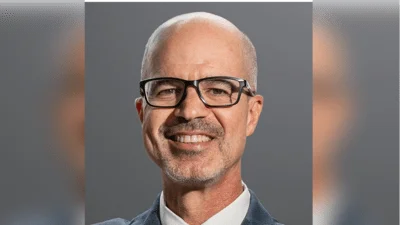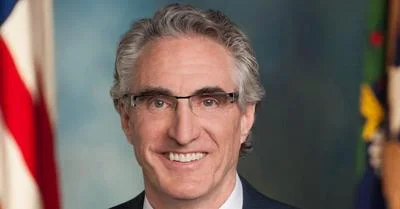The Congressional Record is a unique source of public documentation. It started in 1873, documenting nearly all the major and minor policies being discussed and debated.
“FOOD STAMP FRAUD REDUCTION” mentioning the Federal Reserve System was published in the Senate section on pages S10905-S10906 on July 28, 1995.
The publication is reproduced in full below:
FOOD STAMP FRAUD REDUCTION
Mr. LEAHY. Mr. President, I am convinced that the single most important thing we can do to reduce fraud in the Food Stamp Program is to eliminate the use of paper coupons--and shift to electronic benefits transfer systems, also known as ``EBT.''
I made that same point to this body on November 8, 1993. That was when I first introduced legislation to eliminate food stamp coupons in favor of EBT.
I will introduce an updated version of that bill--which I hope can pass with the support of every Member of the Senate.
I know that Senator Santorum recently spoke of the benefits of EBT, as demonstrated in a pilot project in Berks County, PA.
The Majority Leader, Senator Dole, and I supported pilot testing EBT systems for food stamps in 1982.
My bill eliminates the coupon system in 3 to 5 years. The present system is a clumsy dinosaur in need of overhauling by modern technology.
By the year 2000, those paper coupons --which now cost the Government
$50 million to $60 million a year to print and process--will be history.
We will reduce fraud and save the Government money.
My bill empowers retail stores, financial institutions, and the States to figure out the best way to move to an EBTS system.
My bill specifically gives businesses and States the lead roles in this conversion.
Because the Federal Government saves so much money through EBT, I want USDA to pay 100 percent of the costs of the point-of-sale equipment that goes into the stores, unless the store wants to obtain its own equipment. The bill encourages stores, but does not require them, to buy their own point-of-sale equipment.
Under current law and most welfare reform proposals, States have to pick up half those costs.
I also believe USDA should provide the cards to States at no cost to the State. Under current law, USDA picks up the tab for coupon costs and should do the same for cards.
The point-of-sale terminals should also be available for use by the State for State assistance programs.
Many grocery stores already use electronic systems to read credit cards and debit cards. I do not want us to reinvent the wheel--my bill piggy-backs the Food Stamp Program onto existing technology.
I intend to incorporate this bill either into the food stamp title of the farm bill or into the budget reconciliation bill.
Food stamps are America's largest child nutrition program. Over 80 percent of food stamp benefits go to families with children. Most of the rest of the benefits go to the disabled or the elderly.
I want you to join with me in assuring that nutrition benefits go to needy families--not to criminals who are stealing taxpayer money.
Just about everybody agrees that EBT will reduce fraud dramatically.
The inspector general of USDA has testified that EBT ``can be a powerful weapon to improve detection of trafficking and provide evidence leading to the prosecution of traffickers.''
The U.S. Secret Service says that ``[t]he EBT system is a great advancement generally because it puts an audit trail relative to the user and the retail merchant.''
Under President Bush, USDA noted that ``the potential savings are enormous'' if EBT is used in the Food Stamp Program.
A more recent Office of Technology Assessment report determined that a national EBT system might reduce levels of food stamp fraud losses and benefit diversion by as much as 80 percent. Think about that--EBT could reduce food stamp fraud losses and benefit diversions by as much as 80 percent.
Alan Greenspan has described the potential advantages offered by EBT for the Food Stamp Program, including reducing costs in food stamp processing by the Federal Reserve System.
Perhaps nothing is totally fraud-proof, but EBT is clearly much better than the current system of paper coupons. When a small store stocked with cigarettes and a few stale candy bars starts ringing up food stamp sales in the thousands of dollars, it is pretty obvious that the Government is being taken for a ride.
With the electronic card, EBT transactions can be constantly monitored by law enforcement agencies. Paper coupon transactions cannot.
If we had to reinvent the Food Stamp Program today, would anyone insist on paper coupons, instead of EBT?
Under the current program, USDA prints more than 375 million food stamp booklets per year, which amounts to 2.5 billion paper food coupons for food stamp households to use at retail stores.
These coupons are used once, except for $1 coupons which may be used to make change--and the change is often spent on non-food items.
The 2.5 billion coupons issued per year are mailed, shipped, issued to participants, counted, canceled, redeemed through the banking system by Treasury, shipped again, stored, and then destroyed.
Some States mail them out each month and pay the postage, for which they receive a partial Federal reimbursement. Coupons are lost or stolen in the mails.
Some States issue coupons at State offices, which is labor-intensive. The total Federal and State cost is up to $60 million per year.
EBT has another benefit--it eliminates cash change. Food stamp recipients can get cash change in food stamp transactions if the cash does not exceed $1 per purchase. This system allows food stamp benefits to be diverted to the purchase of non-food items.
While we may disagree over food stamp benefit levels and eligibility rules, I hope we can all agree that transferring food stamp benefits electronically is much better than using paper coupons.
The bill amends the Food Stamp Act to require that the Secretary of Agriculture no longer provide food stamp coupons to States within 3 years of enactment.
Any Governor may grant his or her State an additional 2-year extension and the Secretary can add another 6-month extension, for a maximum of 5\1/2\ years.
At the end of that time, States no longer would receive coupons. Food benefits instead would be provided through electronic transfer, or in the form of cash if authorized by the Food Stamp Act.
For example, under a bill reported out of the Senate Agriculture Committee by Senator Lugar on June 14, 1995, States can cash out food stamp benefits as part of a wage supplementation program.
As in the food stamp bill reported out of the Agriculture Committee by Senator Lugar, States will not be liable for losses associated with lost or stolen EBT cards.
The bill makes households liable for most EBT losses; however, they are not liable for losses after they report the loss or theft of the EBT card.
As under current law, States are liable for their own fraud and negligence losses.
My bill provides that regulation E will not apply to food stamp EBT transactions.
In general, regulation E provides that credit or debit card users are liable for only the first $50 in unauthorized uses of lost or stolen credit cards as long as such a loss is reported in a timely manner.
The card issuer is liable for the rest of the loss.
Under current law the State is considered the card issuer for food stamp EBT purposes. Regulation E has been a major impediment to implementation of EBT by States.
While the risks are much lower for the Food Stamp Program than for credit cards since EBT food cards only contain the balance of the unused food benefits rather than a credit line, States are still worried about liability and oppose the application of regulation E.
The bill also provides that each recipient will be given a personal code number [PIN] to help prevent unauthorized use of the card.
Under the bill, in an effort to reduce the costs of implementing a nationwide EBT system, States will look at the best way to maximize the use of existing point-of-sale terminals. States will be able to follow existing technology, rather than reinvent the wheel.
Stores which choose not to invest in their own systems will be reimbursed for card readers for Federal and State benefits only. Current law, which requires States to pay half that cost, will be amended to have USDA pay all those costs.
If the store decides at a later date that it needs a commercial reader, the store will have to bear all the costs.
In very rural areas, or in other situations such as house-to-house trade routes or farmers' markets, manual EBT systems will be used.
This restriction--in which the Government pays only for Government benefits readers and the upgrade at store expense--will encourage the largest possible number of stores to invest in their own point-of-sale equipment.
That is clearly the best option.
To the extent needed to cover costs of conversion to EBT, the Secretary may charge a transaction fee of up to 2 cents per EBT transaction, taken out of benefits. Households receiving the maximum benefit level may be charged a lower per transaction fee than other households.
In implementing the bill, the Department of Agriculture will have to consult with retail stores, the financial industry, the Federal EBT task force, the inspector general of USDA, the U.S. Secret Service, the National Governors' Association, the Food Marketing Institute, and others.
I believe this legislation will be an important tool as we try to improve the Food Stamp Program.
____________________








